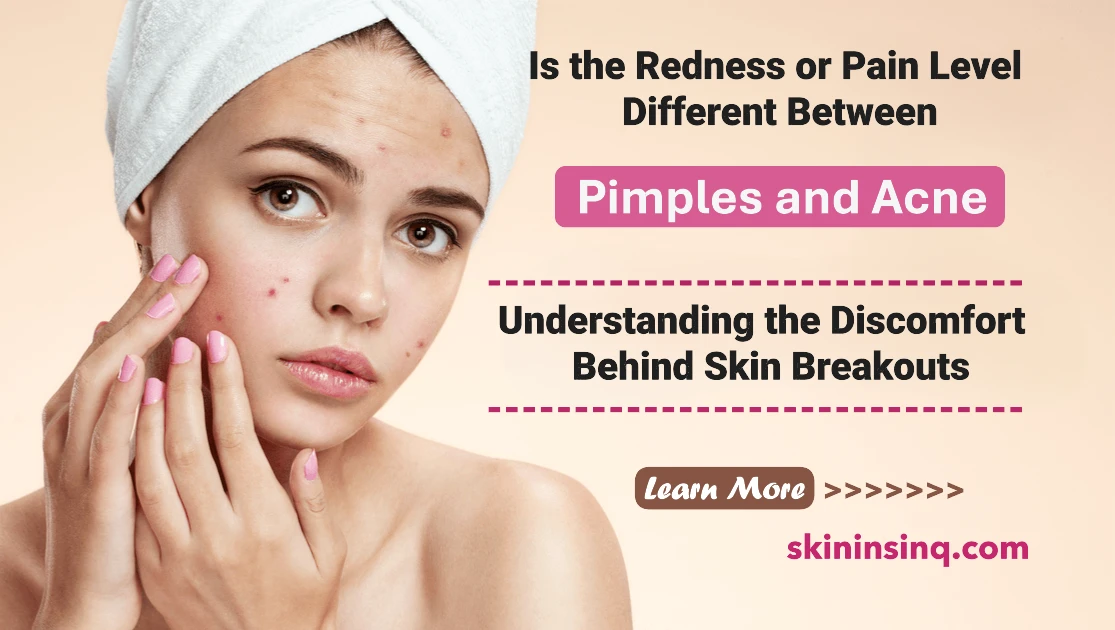Is the Redness or Pain Level Different Between Pimples and Acne? Understanding the Discomfort Behind Skin Breakouts
Is the Redness or Pain Level Different Between Pimples and Acne? Understanding the Discomfort Behind Skin Breakouts
Breakouts are frustrating, whether it's a single pimple or widespread acne. But not all blemishes feel or look the same. One of the most noticeable differences lies in the level of redness and pain they cause. So, is there a real difference in discomfort between a lone pimple and full-blown acne? Let’s explore.
Understanding Pimples vs. Acne
First, it’s important to differentiate between a pimple and acne.
-
A pimple is a general term for a single inflamed blemish, usually caused by clogged pores due to excess oil, bacteria, or dead skin cells.
-
Acne is a broader skin condition that includes various types of lesions — blackheads, whiteheads, papules, pustules, nodules, and cysts — and often appears in clusters or over larger areas of the skin.
Redness: Mild to Severe
Pimples usually present with localized redness, limited to the area around the blemish. The redness is caused by inflammation, as the body sends immune cells to fight off bacteria in the clogged pore. If it's a simple whitehead or blackhead, there may be little to no redness at all.
Acne, particularly moderate to severe types like papules, pustules, and cystic lesions, tends to involve widespread redness. This inflammation may cover large sections of the face, chest, or back. In acne-prone areas, the skin may appear persistently red due to ongoing inflammation, making it more visibly irritated than a single pimple.
Pain: Sharp vs. Deep
The pain level can also vary significantly.
-
A typical pimple might feel tender to the touch, especially if it's inflamed or has a whitehead, but the discomfort is usually short-lived and not severe.
-
In contrast, acne, especially cystic acne, can be painful even without being touched. Cystic lesions form deep under the skin, where the inflammation affects nerve endings. These types of breakouts often cause throbbing or aching sensations that can last for days or even weeks.
Nodules and cysts, the more severe forms of acne, are not only painful but also harder to treat, often requiring prescription medication or dermatological procedures.
Why the Difference Matters
Understanding these differences is essential for appropriate treatment. A single, mildly red pimple might be managed with over-the-counter spot treatments containing benzoyl peroxide or salicylic acid. However, persistent, painful, and widespread acne likely requires a more strategic and long-term approach — including possible prescription topicals, oral medications, or hormonal treatments.
Final Thoughts
In summary, while both pimples and acne involve clogged pores and inflammation, acne tends to cause more intense redness and deeper, more persistent pain, especially in its moderate to severe forms. Recognizing the severity of your breakout can help you seek the right treatment and avoid further irritation or scarring. Whether you're dealing with a lone blemish or chronic acne, addressing the underlying causes and following a proper skincare regimen can make a significant difference in both comfort and skin health.

Related Blog
Can People with Dry Skin Also Have Acne? Understanding Breakouts Beyond Oily Skin Types
Aug 2, 2025 by Admin
General Acne
What Causes Oily Skin and Can It Be Managed Naturally? Exploring Root Causes and Gentle Solutions
Aug 2, 2025 by Admin
General
Does Popping Pimples Always Make Acne Worse? The Risks and Realities of Squeezing Breakouts
Aug 2, 2025 by Admin
General Acne
Do Oily Foods Make Pimples Worse? Uncovering the Truth Behind Diet and Breakouts
Aug 2, 2025 by Admin
General Acne